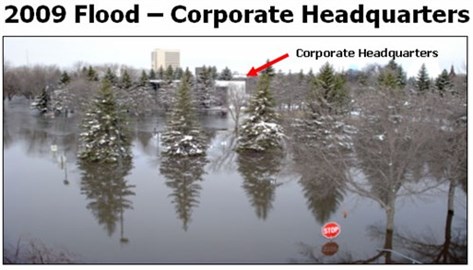522 - 2009 Flood
Spring Management Considerations
Mother Nature seems to want to stay in winter mode much longer than many of us would like this year. Snow is still melting, rivers are high and fields remain wet. All signs point to a spring of intense activity squeezed into a short time period. Timely field preparation, fertilizer application, planting, cover crop use and pesticide management become especially important in a shorter growing season.
Spring Fertilizer Management
A very large percentage of the nitrogen fertilizer for the 2009 crop did not get applied last fall. It's obviously very important to apply the correct amount of nitrogen in the right way to maximize crop yield and quality. Spring fertilizer application presents several challenges that must be considered.
- Application of actual pounds of nitrogen (this is not pounds of urea or AA) in excess of 75 lbs/acre can reduce sugarbeet plant populations.
- 2008 UM research observed stand loss when application rates reached 90 lbs actual N per acre or more.
- NDSU research in the 1980's and 1990's observed stand loss of greater than 12 percent when 100 lbs per acre actual N was applied as urea.
- Risk of stand loss is greater if:
- Soils are coarse textured (sandier)
- Soils are drier
Recommendations for spring nitrogen management
- Apply only 75 lbs per acre actual nitrogen
- Side-dress or top-dress additional nitrogen as needed by June 15
- Increase seeding rate by 10 percent to compensate for anticipated stand loss if applying more than 75 lbs/acre - for a 5 inch spacing this would tighten the seed spacing to 4.5 inches
- If side-dressing be aware of potential losses of N by volatilization especially with urea
- Apply urea immediately ahead of rainfall to eliminate need for incorporation
- Incorporate urea within 24 to not more than 48 hours to stop N loss
*** Don't delay planting to apply fertilizer *** Timely planting is critical to success. Contact your agriculturist for assistance.

Spring Cover Crop - Stand Establishment Insurance
American Crystal growers used cover cropping practices on nearly 50,000 acres of sugarbeets in 2008. Cover cropping is excellent stand establishment insurance for little cost.
- Broadcast cover crop seed just prior to seedbed preparation or
- Seed cover crop right after seedbed preparation prior to seeding beets
- Barley wheat and oats have proven to be effective cover crop choices
- Don't use less than ½ bushel seeding rates (up to a 1 bushel seeding rate for maximum protection)
- Apply herbicides in a 7 or 11 inch band to maintain cover crop between the rows
- Control cover crop over the row by the 3 or 4 leaf stage to eliminate crop competition
- Don't cultivate or spray out the cover crop from between the rows until the beets are able to withstand high winds
Curved or Straight
2007 NDSU research showed 320 lbs more RSA and increased revenue of $48 per acre with the straight seed tube versus the curved seed tube.

